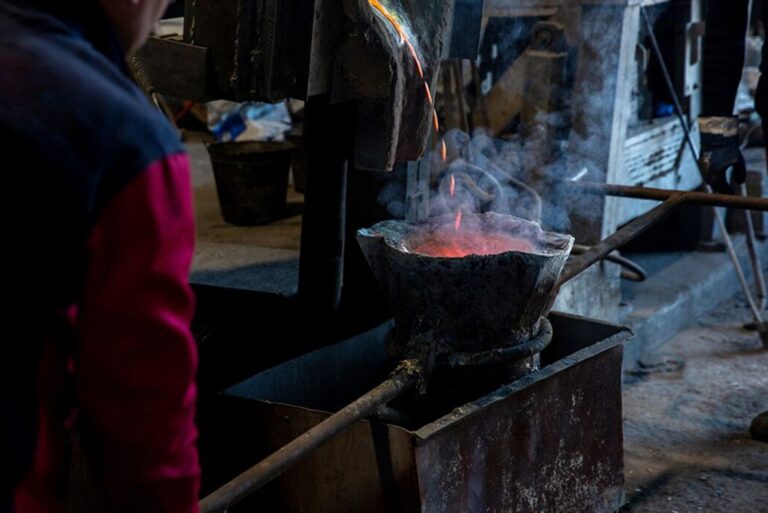Chemical reactions shape our world by manufacturing everyday products. At the heart of these transformations lies a fascinating tool: catalysts. What is the usefulness of catalysts?
Catalysts lower the activation energy required for a reaction, allowing it to proceed faster or under milder conditions, such as lower temperature or pressure. This special ability has made them indispensable in modern manufacturing.
Let’s explore how these remarkable substances work and why they’ve become fundamental to chemical processes across industries.
How Does a Catalyst Work?
A catalyst facilitates a reaction by providing an alternative pathway with lower activation energy. It participates in the reaction but remains unchanged at the end. The process of using a catalyst to accelerate a chemical reaction is known as catalysis.
Chemical reactions involve breaking and rebuilding bonds between atoms in molecules to form new substances. Catalysts make this easier by lowering the activation energy – the minimum energy needed for the reaction to start. This means atoms can break old bonds and create new ones more easily.
Think of it like this: catalysts help atoms switch partners and form new teams much faster than they would.
Over the years, scientists have created many specialized catalysts, leading to major changes in chemical manufacturing. These discoveries have made possible new products like biodegradable plastics, medicines, cleaner fuels, and fertilizers.
What Is the Usefulness of Catalysts?
Catalysts shape the foundations of modern chemistry and manufacturing. They speed up countless reactions that create the materials we use daily, from medicines to plastics.
Chemical Reactions
Catalysts make chemical reactions faster while using less energy. Through selectivity, they limit unwanted byproducts during the reaction process, creating materials with fewer side effects for new applications. This targeted approach opens doors to making products that were previously impossible or impractical to produce.
Traditional chemical reactions often create toxic substances and waste energy. These harmful byproducts damage our environment through air pollution, water contamination, and excessive energy use. The old methods left behind a trail of environmental challenges that needed solving.
Catalysts have changed chemical production methods. We now make eco-friendly fuels, fertilizers, and biodegradable plastics.
The transformation extends to many industries, where catalysts enable cleaner manufacturing processes and more sustainable products. This shift in chemical processes leads to better products and a cleaner environment with fewer harmful substances.
Organic Reactions
What is the usefulness of catalysts? In organic reactions, catalysts direct which specific products form by guiding molecular interactions. This control shapes the outcome of chemical processes.
When catalysts bind with reactant molecules, they create temporary compounds that react more readily. The catalyst remains intact after the reaction finishes, making it available for repeated use. This cyclic process speeds up chemical transformations without depleting the catalyst itself.
Catalysts shape how atoms arrange themselves in three-dimensional space. This precise control matters deeply in living systems, where molecule shapes determine their functions. Natural catalysts like enzymes demonstrate this principle – they create exact molecular arrangements needed for life processes.
Catalysts also determine which parts of a molecule change during reactions. They target specific regions, leading to precise chemical modifications.
The choice of catalyst affects reaction speed through its influence on activation energy. Scientists select specific catalysts to achieve their desired reaction rates.
Industrial Processes
Catalysts drive industrial progress as key agents that speed up chemical reactions and improve product quality while using less energy. These substances shape manufacturing across sectors – from fertilizer production to chemical synthesis to renewable fuel development. This technology remains its current focus on cutting carbon emissions and industrial pollution.
In oil refining, catalysts transform raw petroleum into gas, diesel, and other products. The process of making ammonia for nitrogen fertilizers depends on catalytic reactions. These substances also enable the precise manufacturing of polymers, medicines, and specialty chemicals, helping control the final products’ composition and purity.

Energy Transition
Catalysts drive the shift toward greener technology. These substances speed up the production of biodegradable plastics, replacing harmful materials.
As industries adopt greener methods, the need for eco-friendly catalysts grows. These materials now stand at the forefront of clean energy development and the fight against climate change.
Enzyme-based catalysts, for example, known as biocatalysts, represent nature’s green chemistry tools. These substances come from renewable materials and work without harmful effects – they break down naturally, contain no toxins, and react at room temperature.
Biocatalysts help make biofuels by mixing fatty acids from plant oils with methanol. This creates biodiesel pius glycerol as a side product. Scientists now combine these biological catalysts with metal ones to develop sustainable ways of making valuable chemicals.
Industrial catalysts need precise testing to prove their worth in manufacturing. Since 1880, Ledoux & Co. has conducted detailed metallurgical analysis of these materials. The lab’s ISO 17025 certification shows its commitment to high standards in catalyst testing. Our methods check catalyst performance, composition, and stability to guide industrial decisions. This expertise helps companies pick the right catalysts for their specific processes.

Ensure Optimal Catalyst Performance with Ledoux
Catalysts continue to shape modern manufacturing, driving progress across chemical processing, environmental protection, and energy production. Their ability to speed up reactions while cutting energy costs makes them indispensable tools for businesses seeking better production methods.
To get the most from catalyst technology in your operations, connect with Ledous’s team of specialists. Our deep catalyst selection and process engineering expertise will help your facility achieve its performance targets.
What is the usefulness of catalysts? If you have further questions, reach out today to discuss how we can support your catalyst needs.
FAQs
What is the useful life of a catalyst?
A catalyst begins as a fresh oxide that undergoes pre-sulfiding before its use in refinery operations. When the catalyst’s performance drops below acceptable levels under standard reactor conditions, operators must shut down the equipment. This process chain spans numerous steps, with specialized companies handling different phases of the catalyst’s journey.
What are the common uses of catalysts?
Common industrial catalysts and their applications include:
- Iron catalyzes ammonia production in the Haber Process.
- Platinum enables nitric acid manufacturing through the Ostwald process.
- Rhodium combined with platinum powers catalytic converters.
- Nickel transforms vegetable oil into margarine through hardening.
- Vanadium (V) oxide facilitates sulphuric acid production in the contact process.













